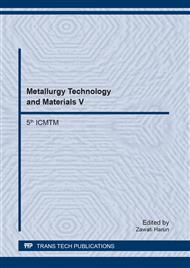p.142
p.146
p.151
p.157
p.162
p.167
p.174
p.179
p.185
An Experimental Study on the Frost Resistance of High Performance Concrete Using Fly-Ash and Agent
Abstract:
The purpose of this study is to investigate the freeze-thaw resistance, one of the most important durability indicators, of high-performance concrete made of fibers (nylon and polypropylene), AE agent, viscosity agent, and fly ash, an industrial by-product. While FN-1 showed the best freeze-thaw resistance with an about 2.8% relative dynamic modulus of elasticity, PV-2 showed the worst results, with an about 7.4% modulus, in comparison tests with GC. Most of the test samples showed better compressive strength than GC. Especially, N-1 showed the greatest compressive strength increase of 8%. Also, the test samples mixed with FA and PP showed a 2-4% compressive strength increase effect.
Info:
Periodical:
Pages:
179-184
Citation:
Online since:
August 2017
Authors:
Keywords:
Price:
Сopyright:
© 2017 Trans Tech Publications Ltd. All Rights Reserved
Share:
Citation:


